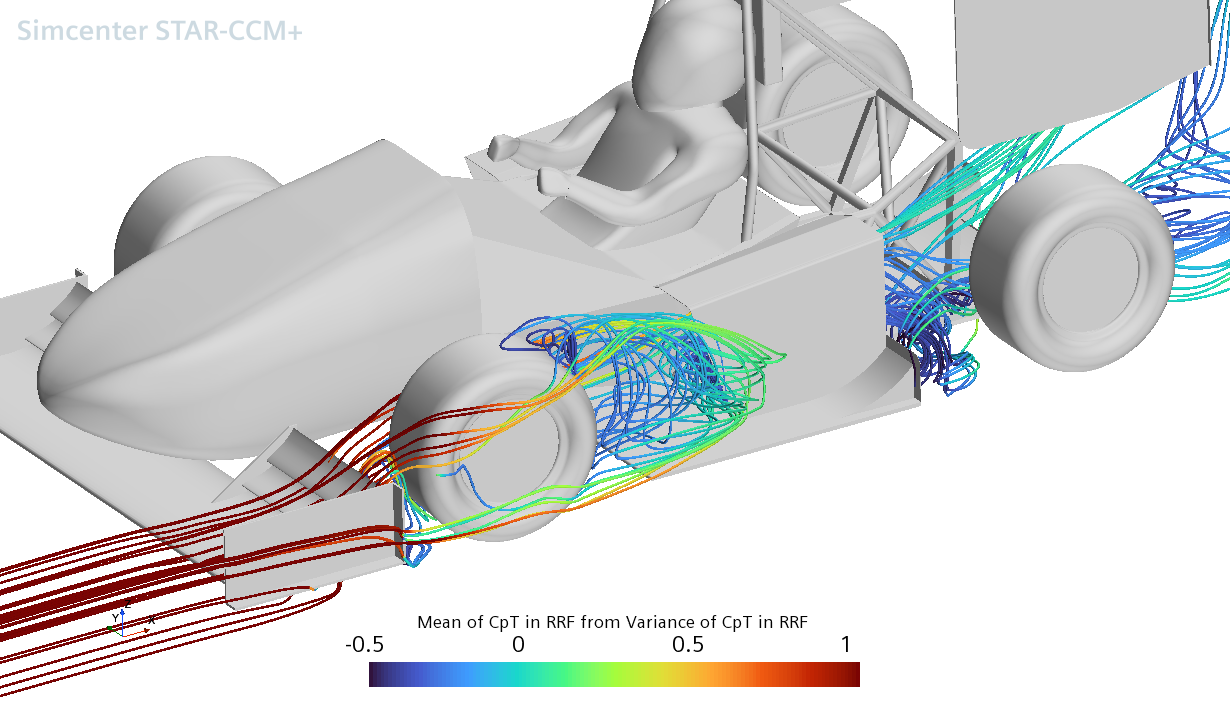Case Study: UTFR Uses ACTnowHPC to Run CFD Simulations to Optimize Bodywork for Formula SAE Car Design
For the fourth consecutive year, the University of Toronto Formula SAE Racing Team partnered with Advanced Clustering to make use of the company’s on-demand HPC cloud solution, ACTnowHPC.
 Andrija Stepanovic, Aerodynamics Lead for the team, said he joined the team two years ago and saw how the group’s approach to computational fluid dynamics (CFD) has evolved.
Andrija Stepanovic, Aerodynamics Lead for the team, said he joined the team two years ago and saw how the group’s approach to computational fluid dynamics (CFD) has evolved.
“We have a big setback with covid-19 last year but we were able to implement an undertray for drag reduction. We did manage to manufacture it and get it on the car. We got the CFD data that showed performance increased significantly. All that’s left is validation.”
They saw a 20% performance increase in downforce with the undertray. Downforce is the aerodynamic force that our package is applying to the tires. It increases the grip of the tire without increasing the map of the tire.
They are still working on getting the validator to work.
For the next year, they have a plan to implement a major improvement.
“We’re starting the year with a simulation to change the way the car is sitting and the yaw of the car. Instead of giving us performance in straight lines we can see how it performance across a wide range of operating conditions. We can see how it performs in a full lap around the track.
We have two design changes under consideration as well.
One involves the front wing. Our wing last year was sensitive to height. We have quite a radical design. It’s not common at all. Our main plane of the wing is split into two small foils so it will perform across lots of operational conditions.
The rear air foils weren’t meant for multi-element conditions. Our new wings will be custom and slightly bigger for better performance.This will give us a 10% increase of performance in the rear wing.
We also plan to provide cooling for the accumulator. We didn’t cool the accumulator last year. We realize now that it’s a good idea to implement air cooling to the accumulator. We’ll be using CFD to see how it works.
“ACTnowHPC has helped the team by providing us with access to their high performance computing cluster. These resources have been invaluable in helping us do Computational Fluid Dynamics simulation on our car and better understand our aerodynamics package. CFD requires a lot of RAM to be able to calculate the flow in a large domain, such as around our car. In addition to this, it is very intensive on the CPU. Therefore, with ACTnowHPC’s support the team is able to run large simulations and do so in a timely manner.”
White Papers
- Case Study: Caltech Implements New ClusterVisor 1.0 to More Effectively Manage HPC Cluster and Workloads
- Case Study: UTFR Uses ACTnowHPC to Run CFD Simulations to Optimize Bodywork for Formula SAE Car Design
- Covid-19 Research That Matters: Folding@home Leverages Advanced Clustering and AMD EPYC CPUs
- Romeo Power Running Simulations on ACTnowHPC to Drive Battery Innovations
- Advanced Clustering’s Storage Blocks with BeeGFS Support Large Scale BioPharmaceutical Research at AbbVie
- Case Study: UTFR Runs CFD Simulations in the Cloud to Optimize Formula SAE Car Design
- Case Study: Weather Forecasting in the Cloud
- Building an HPC Solution with Flexibility to Meet Future Needs
- Cost and Performance Enhance Research Efforts
- Closing the Gap On Memory Performance For Development Of Genetic Data Analysis Software
Request a Consultation from our team of HPC and AI Experts
Would you like to speak to one of our HPC or AI experts? We are here to help you. Submit your details, and we'll be in touch shortly.
"*" indicates required fields
